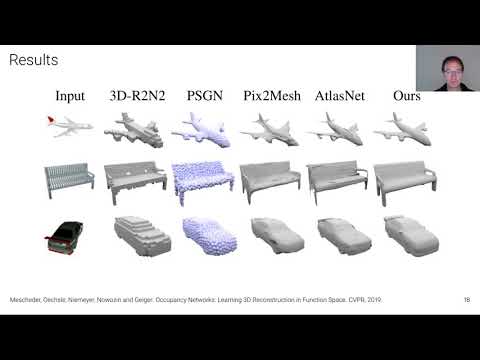Description:
Explore cutting-edge techniques in 3D reconstruction through this keynote presentation from CVPR 2020. Delve into neural implicit 3D representations, moving beyond traditional voxels, points, and meshes. Discover how these approaches offer compact memory usage and model complex 3D topologies at high resolutions in continuous function space. Examine the capabilities and limitations of reconstructing 3D geometry, textured models, and motion. Learn about innovative methods for learning implicit 3D models using only 2D supervision, including an analytic closed-form solution for gradient updates. Cover topics such as texture fields, occupancy flow, differentiable volumetric rendering, and neural radiance fields (NeRF). Gain insights into the future of 3D reconstruction and its applications in computer vision and graphics.

Learning 3D Reconstruction in Function Space - Long Version
Add to list
#Computer Science
#Artificial Intelligence
#Computer Vision
#3D Reconstruction
#Computer Networking
#Network Architecture
#Machine Learning
#Loss Functions
#Computer Graphics
#Neural Radiance Fields